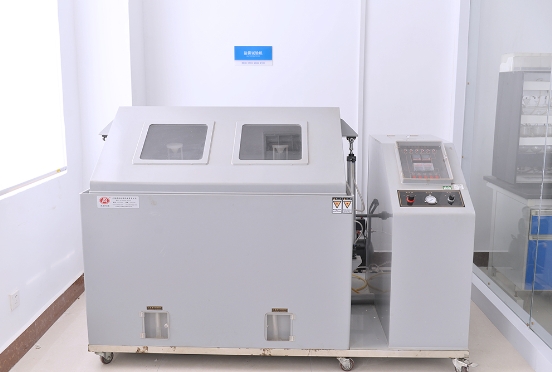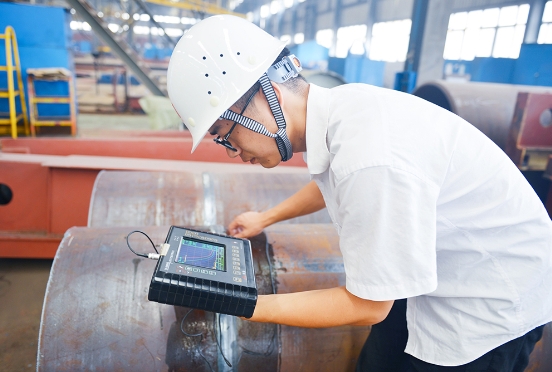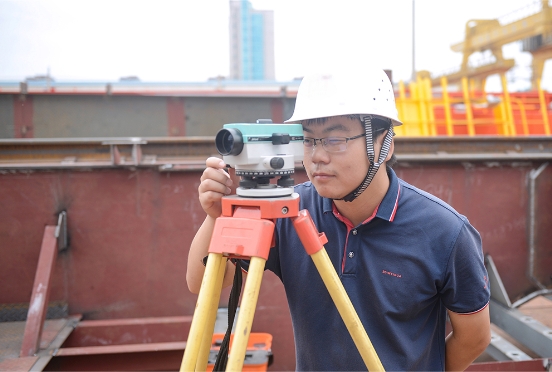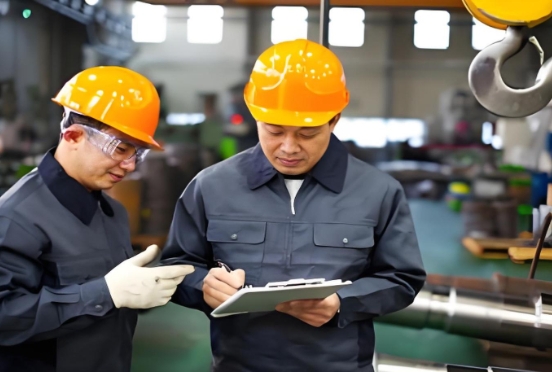

1. Steel Quality: All incoming steel materials such as steel plates and welding parts are inspected for compliance with relevant standards regarding material, size, configuration, weight, and allowable deviation by qualified professionals to ensure its quality in terms of chemical composition, mechanical strength, etc.
2. Welding Quality: Certified welders ensure welding meets strict specifications for groove form, size, and materials. Welding quality is verified through appearance checks, nondestructive testing, radiographic and ultrasonic testing, and other methods in line with standards.

1. Surface Pre-treatment: Rust removal via shot and ball blasting, followed by primer painting for corrosion protection.
2. Marking & Cutting: Precision marking and accurate cutting using CNC, semi-automatic, or manual methods to meet specifications.
3. Welding: Ensure high-quality welding with certified methods, followed by flaw detection using ray and ultrasonic testing.4.
4. Leveling & Assembly: Level, mark, cut, and assemble parts as per crane design drawings, ensuring precision and accuracy.5.
5. Final Checks: Conduct flaw detection on weld seams and ensure proper assembly before final operation.

1. Machining: Parts are shaped and finished using milling, grinding, drilling, and similar processes to meet precise specifications.
2. Purchased Parts: Motors, reducers, bearings, and other components are sourced according to design specifications and assembled following crane blueprints.
3. Partner-Supplied Parts: Items like castings and forgings, designed by our engineers but produced by partners, are inspected upon arrival to ensure quality.
4. Crane Assembly: Crane components are assembled per design. For transport convenience, some parts are disassembled after testing and reassembled on-site.
5. Inspection & Certification: Cranes undergo inspections and tests to meet standards. Certified cranes are issued ex-work certificates.
6. Load Testing: Static and dynamic load tests confirm the crane's capacity and functionality.
7. Painting: Paint is selected for durability in specific environments (e.g., corrosive or wet). Coating quality is checked for thickness and finish.
8. Delivery & Erection: Cranes are delivered, installed, and commissioned to ensure proper operation and safety.
9. After-Sales Support: Services include crane inspections, maintenance, parts supply, and refurbishment to extend crane life and maximize investment value.

1. Radiographic Testing (RT): Uses X-rays, gamma rays, or neutron rays to detect internal defects and material discontinuities.
2. Ultrasonic Testing (UT): Identifies internal flaws in metals such as pipes, plates, bars, and welds.
3. Penetration Testing (PT): Works in tandem with ultrasonic testing to detect internal defects and ensure quality assurance.
4. Magnetic Testing (MT): Detects surface and near-surface discontinuities on specimens.
5. Coating Testing: Assesses paint performance using thickness testers, adhesion testers, and film grading instruments to measure properties like thickness, adhesion, gloss, corrosion resistance, oil resistance, and acid resistance.
6. Metal Hardness and Resistance Testing: Evaluates metal hardness and resistance using static methods like HB, HRC, HV, and HL.

To enhance reliability and demonstrate our confidence in product quality, we offer third-party certification services such as ROHS, SGS, and commodity inspection. If you require third-party certifications for our overhead cranes, gantry cranes, jib cranes, electric hoists, electric winches, or aerial work platforms, please don’t hesitate to contact us.
